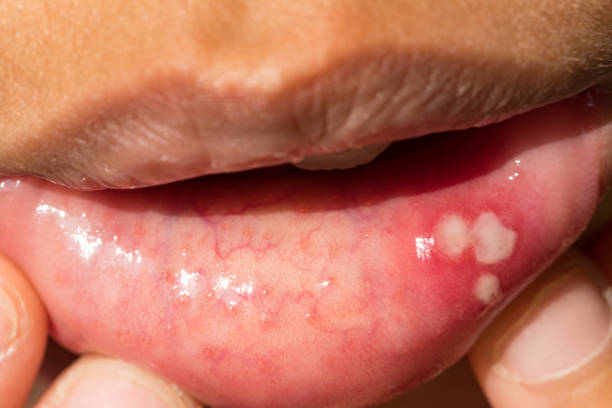Oral ulcers are also called Aphthous ulcers and also Canker sores.
PKGhatak, MD
The word Aphthous is an adjective for the noun Aphtha. Aphtha is an old Greek word, the plural is Aphthae. Aphthae means Oral Ulcers due to any cause, that includes oral thrush and viral infections like foot and mouth disease (Picornavirus).
Oral ulcers develop in the mucous membrane (surface layer) of the gum, cheeks, roof of mouth and tongue. The ulcers have a white looking base surrounded by red inflamed borders and are painful.
Cause:
Any injury to the soft tissue of the mouth or tongue may start an ulcer. It is usually from a bite, ill fitting dentures, drinking hot drink or food, rough toothbrush, careless dental cleaning, vitamin B12, folic acid and iron deficiency, immune deficiency diseases or following chemotherapy and fungal (Candida) infection, commonly called thrush, and food allergy.
Diseases usually associated with oral ulcers:
Diabetes, Crohn's disease of the intestine, Celiac disease, Bechet's disease and Ulcerative colitis.
Other factors that favor oral ulcers are stress, hormonal changes, lack of sleep and infections.
Infection: The common virus infections are HIV and Herpes simplex; common bacteria are Staphylococcus, Actinomyces, and Helicobacter pylori. And common fungi are Candida albicans and Histoplasma capsulatum.
Course:
Oral ulcers can be recurrent if the associated disease or conditions are not properly treated. Oral ulcers usually heal in 10 to 14 days.
When ulcers persist for more than 3 weeks, one of these conditions are responsible: - Fever, diarrhea, new ulcers appear before old ulcers heal, large size ulcers, ulcers on the outer lip surface are associated with oral ulcers.
Clinical types of oral ulcers:
There are two types - usual oral ulcers and herpetiform oral ulcers.
The usual ulcers are small to moderate sizes, oval to round shaped and have defined red edges. These ulcers heal without scarring.
Herpetiform oral ulcers are clusters of pinpoint ulcers, 10 to 100 ulcers and appear in groups. Later in the course, it may merge to become a large ulcer. These ulcers have a close resemblance to Dermatitis Herpetiformis of the skin. These lesions are not due to herpes virus infection.
Treatment:
Home recedes. Plenty of free advice is given over social media. Most of them include - frequent warm water salt gurgle several times a day; applying Back Tea bags directly over the ulcers - the tannin of the tea improves pain and accelerates the healing of ulcers. Similarly, powdered Alum (potassium ammonium sulfate), Baking soda, Orejel, Ambesol, honey, Milk of Magnesia and many other remedies are advocated.
Any food, having salt sprinkled over should be strictly avoided – salt crystal lodged in the ulcer crater is very painful and causes more tissue damage. Also, to be avoided are very hot food or drinks, spicy, difficult to chew food items and sour fruits and drinks.
Medication:
The most useful medicine is the Colchicine tablet. Use of Colchicine 0.5 to 2 mg a day for 2 days is enough to stop oral ulcers appearing and speeds up ulcer healing. At times Colchicine needs to be taken for longer periods of time, in reduced doses, to prevent a recurrence. Thalidomide 200 mg twice a day for 3 to 8 weeks is advised in immune related Aphthous ulcers. For bacterial infection, Minocycline or Tetracycline 250 mg in a cup of water(180ml) swishes around in the mouth and then spits out, three times a day for 3 to 5 days is also used.
At the same time, any underlying condition and illness should be adequately addressed.
*********************************

